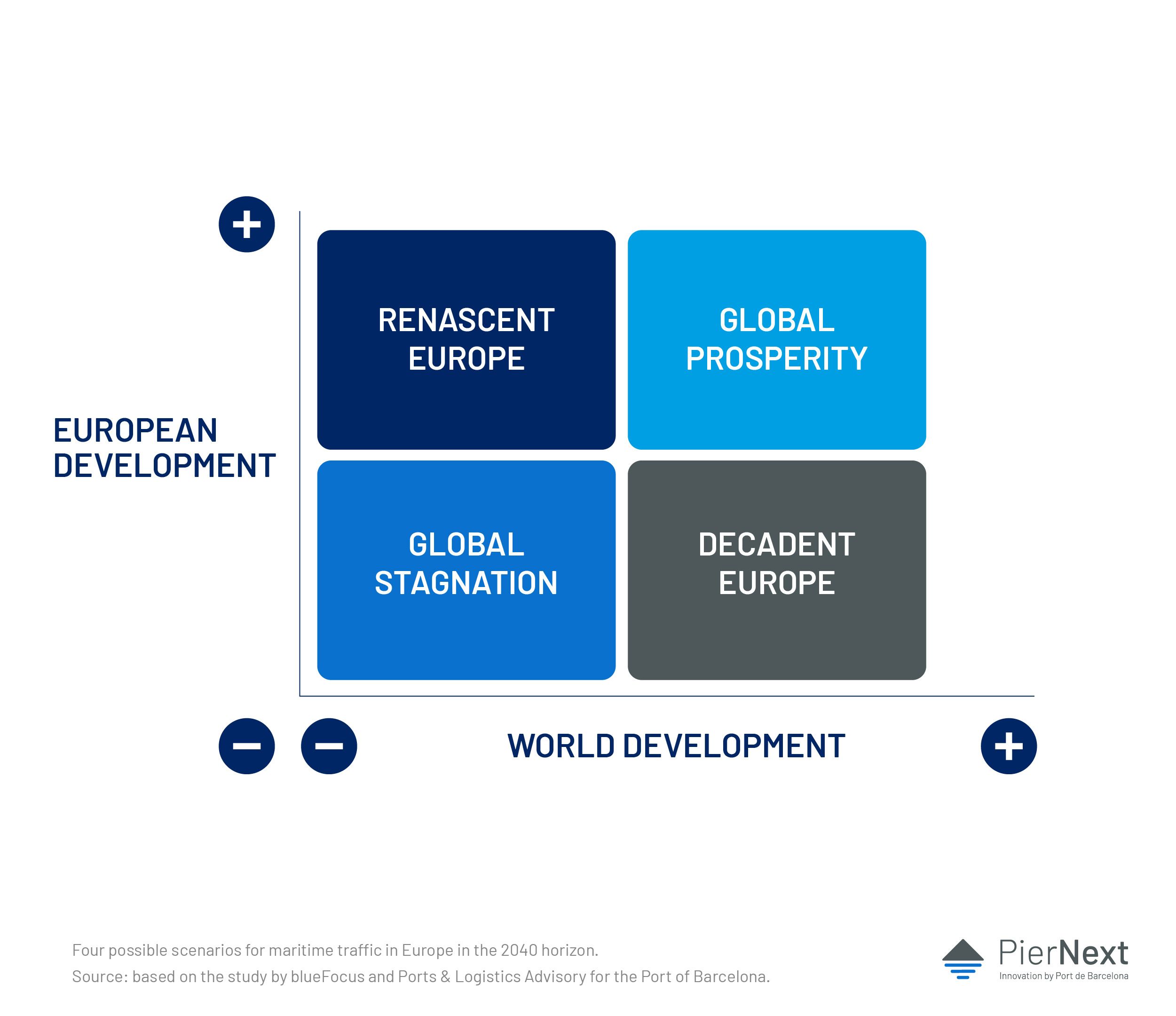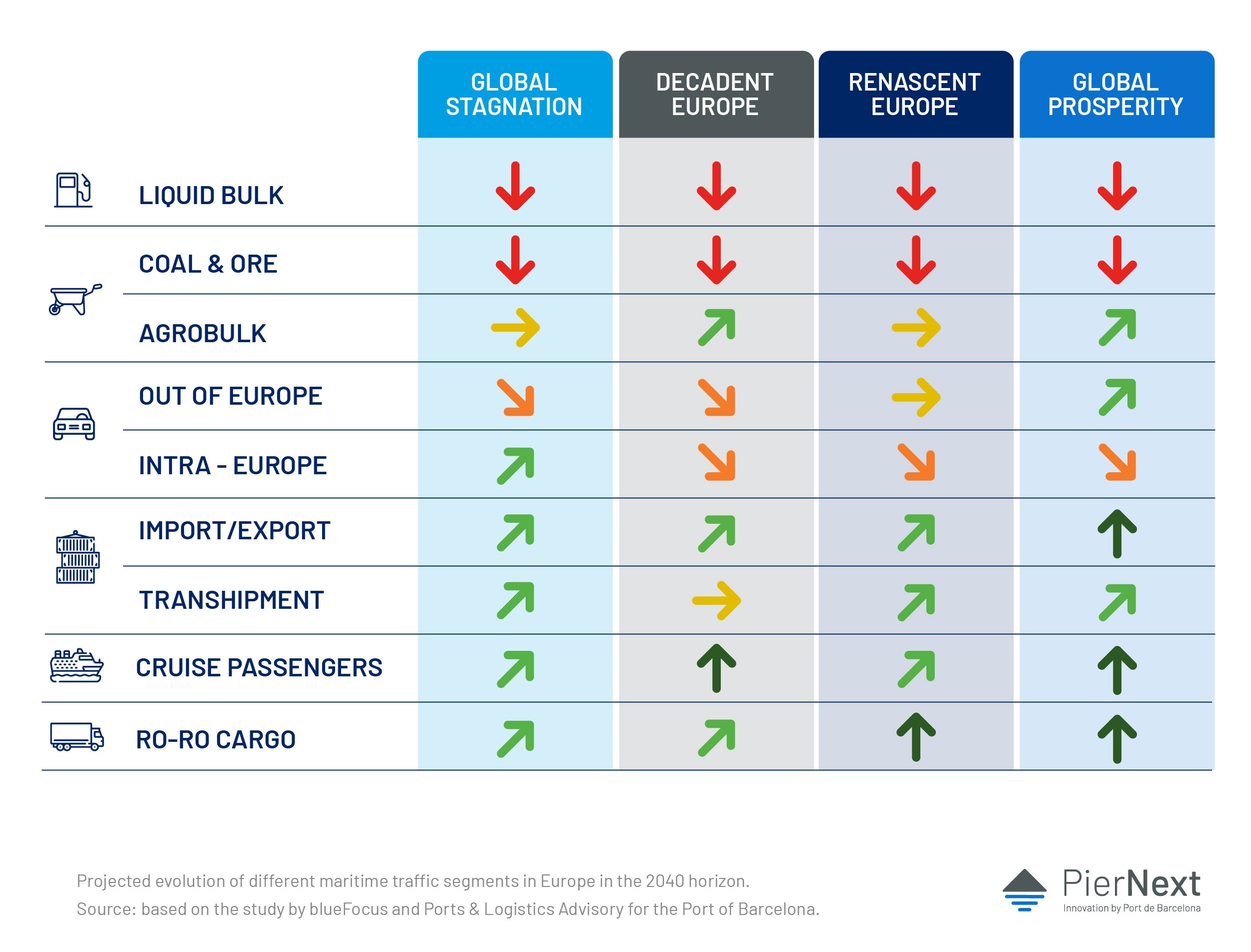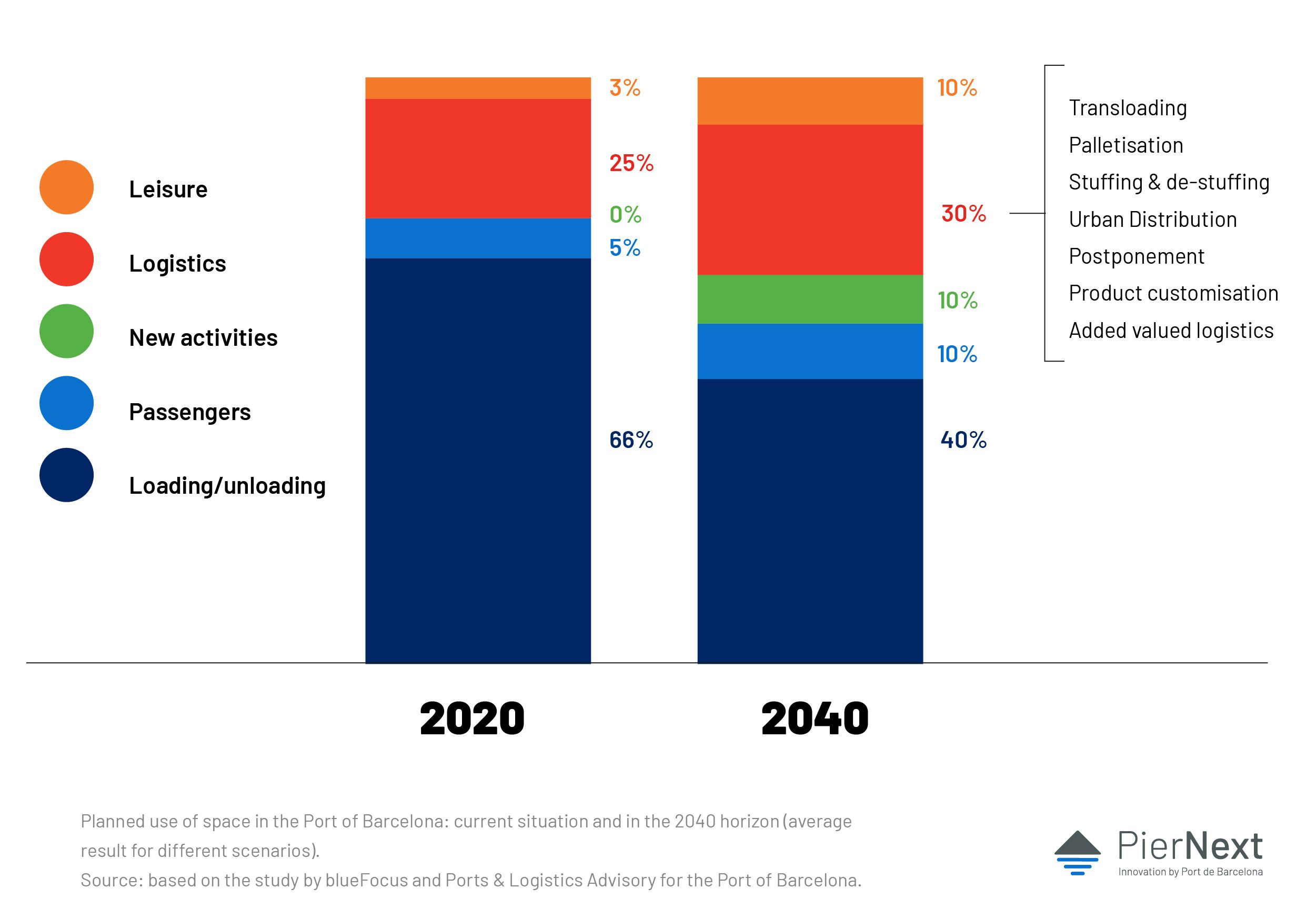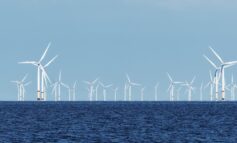The IV Strategic Plan of the Port of Barcelona, recently presented, includes a projection on the maritime traffic trends in Europe for 2040. PortEconomics member Peter de Langen partnered with the consulting firm blueFocus, analyze these trends two decades ahead to establish long-term traffic forecasts. Given the difficulties in making reliable forecasts, the scenario technique was used to predict this future. This is how the four scenarios arise in the IV Strategic Plan of the Port of Barcelona.
The starting point of the maritime traffic study in Europe in the 2040 Horizon has been to identify the trends which have the highest degree of consensus:
- Economic trends: expected growth in developing economies, in contrast to stagnation in advanced economies; the increase of the urban population or the development of new market niches such as the blue economy.
- Environmental trends: the fight against climate change and decarbonisation and the reduction of emissions in all activities; the commitment to circular economy and the use of cleaner energy sources or the increase in electric mobility and micro-mobility.
- Social trends: among which stand out the “servitization” of the economy (substitution of physical goods for virtual ones, property by use); the aging of the population, especially in Europe, and the employment reduction or the growth of tourism (if the pandemic subsides).
- Trends linked to supply chains, such as the increasing appearance of global disruptions; the development of electronic commerce and circular economy or the role additive printing or autonomous transport can take.
- Trends in maritime transport, mainly the development of mega-ships, the future appearance of new routes, the increasing concentration of operators or the development of digitalisation and automation in the sector.
To construct the scenarios, the two factors that are considered most sensitive for the future were taken into account. On the one hand, the geopolitical and global growth context in which we will progress, and on the other, the ability of European society to move towards new, more sustainable models at a technological, environmental, social and productive level.
Graphically, this can be represented by coordinate axes, where the X (abscissa) represents global economic evolution, based on stability and cooperation between countries, and the Y (ordinate) represents Europe’s ability to lead the transition to a sustainable society / economy transition towards a sustainable society/economy.















